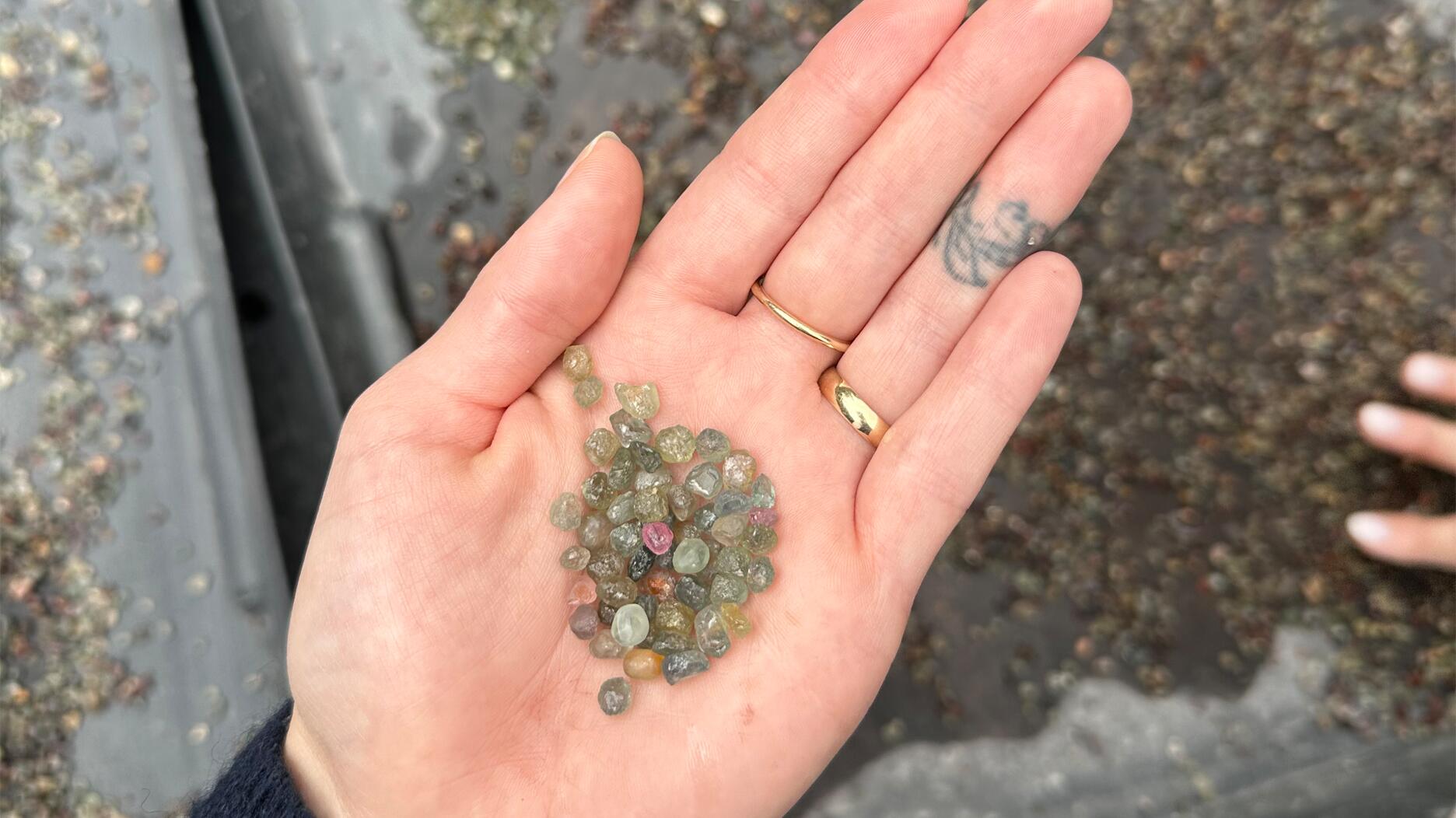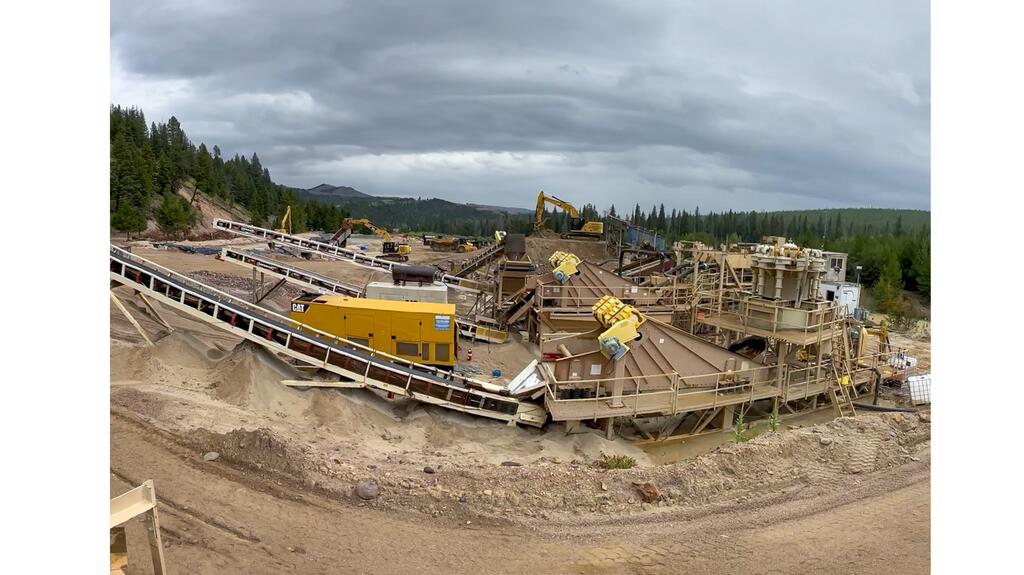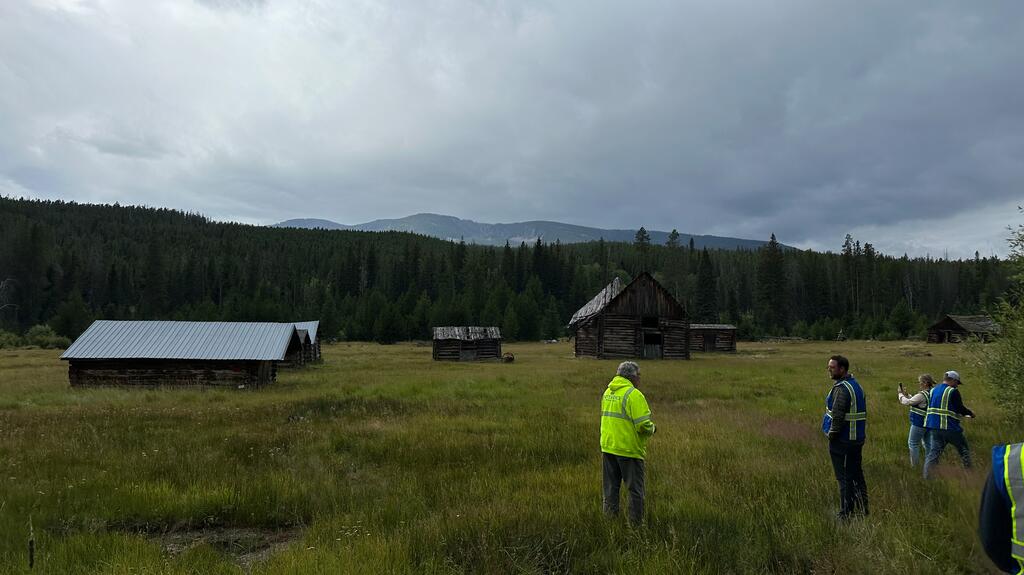Out & About: Mining Sapphires in Rock Creek, Montana
Associate Editor Lauren McLemore headed out West for a visit to Potentate Mining’s operation hosted by gemstone wholesaler Parlé Gems.

In photos taken at the source, the denim blue and forest green gemstones mirrored the picturesque landscape surrounding the deposits where they are mined.
Last month, I had the opportunity to visit Potentate Mining’s operation in Montana’s Rock Creek district and was able to see the raw material up close.
For their second annual Montana Showcase, jewelry designer and wholesaler Parlé Gems hosted a handful of designers and retailers, myself included, for a few days in the historic mining town of Philipsburg, Montana.
Located in Southwest Montana about halfway between Yellowstone and Glacier National Parks, it provides quite the scenic Rocky Mountain backdrop.
With one stoplight and a population of just over 900, visitors can see the town highlights in less than a day.

We took the first day to explore Main Street, venturing out later for activities like horseback riding and fly fishing, and then, it was all about the sapphires.
The Processing Plant
Potentate Mining’s Marketing Director Warren Boyd led us on a tour of the company’s operation in the Rock Creek, or “Gem Mountain,” district.
The miner extracts sapphires from surface-level deposits.
At its processing plant, there are 10 jigs that settle the stones by density. Two are for oversized stones, two for fine stones and fine gold, and the other six are for the sizes most often used in jewelry.

The gravel is processed at the mine office about 20 miles away, where it is run through pre-sorting machines and then picked through by hand in preparation for the next phases, like acid washing and heat treating.
Boyd said during our visit in early August that the company had mined 150 kilograms of sapphires so far that season and expected to have 300 kilograms by the close of the season in October.
Less than 15 percent of the sapphires recovered fall in the 0.75-10 carat range, but Boyd noted that although finding big stones is exciting, most of the money for the operation comes from the small and midsize gems.
A Mining History
Potentate currently holds claim to the largest sapphire-producing land package in the Western Hemisphere and has been operating in the area since 2011.
However, sapphire mining in Montana dates back more than a century. Deposits in Rock Creek were first discovered in the 1890s.
On the way to the processing plant, we stopped at an old base camp site early miners used between 1905 and 1935.

Most sapphires mined at that time were shipped to Switzerland for watch movements, but synthetic sapphires eventually replaced natural ones for the jewel movements, and the camp shut down.
The workers at that time only mined the creek beds, or gulches, which drain into a flatter area referred to as the meadows.
Because the meadows had water just below the surface and early miners didn’t have the water pump technology needed to recover what was below, a host of sapphires located 15 to 20 feet down were left untouched.
Potentate is the first commercial mining company to consolidate the land covering most of the old alluvial workings and the surrounding hilltops, which are still producing sapphires.
Committed to Sustainability
In 2011, Potentate acquired its first claim in the area, the Eureka Gulch sapphire and gold mine on the north side of Gem Mountain, commencing mining in 2012.
In 2014, the company secured approximately 3,000 more acres on the south side of Gem Mountain.
Since coming onto the scene, the company has been dedicated to preserving the integrity of the environment, according to Parlé, beginning with Eureka Gulch, which was mined out and then rehabilitated.
Eureka Gulch comprises 80 acres, including the mine office and the surrounding grassy fields—a lush scene one might never know was once an open-pit mine.
While Potentate does have a genuine interest in environmentally friendly practices—it doesn’t use mercury, cyanide, or other harsh chemicals—the company is also incentivized to be responsible.
The Montana Department of Environmental Quality requires mining companies to post bonds, which the miners don’t get back until they rehabilitate the land. It also ensures the funds are available if the company suddenly goes out of business.
Potentate is also conscientious when it comes to the surrounding landscape. The company is not allowed to mine within 100 feet of Rock Creek. It is a blue ribbon trout stream, which is protected by several organizations. Polluting the water means substantial fines and potentially other penalties.
“We cannot afford to get mud in the creek,” Boyd said.
“Our big worry is not about trespassers coming in and stealing stones; it’s about them washing gravel in the creek and us getting blamed.”
The miner also has opted to take measures toward sustainability that are all its own, like recycling 90 percent of the water from its processing plant.
“It’s quite an unusual thing, even with other Montana sapphire [operations],” said Brecken Farnsworth of Parlé.
Looking Forward
Recovering the stones requires effort, time, and money, but Potentate hopes the mine will be profitable by next year, after about 14 years in operation, which Boyd said is standard.
(For comparison, most gold operations take 8-10 years or longer to start turning a profit, and diamond mines are generally around 2-6 years, according to Boyd.)
There are still some challenges to navigate, such as staffing and tariffs. Any rough sent outside of North America to be faceted becomes a product of the country where the stone was cut and therefore is subject to the tariff imposed on that country’s imports when the coming back into the U.S.
One thing the company doesn’t worry about is supply.
“When I first came to this property back in the ‘90s, unrelated to this business, I nearly fell off my chair,” Boyd said. “There were sapphires everywhere.”
The land in this area is unique. As Boyd puts it, “Geology-wise, nature has been very kind in Rock Creek.”
Though much of Montana was once under ice, glaciers never covered this section of the state.
“In Canada, it’s been heavily glaciated down to the bedrock, and if that was the case [here], our deposits would have been spread to the wind. It would’ve been all over the place,” Boyd said.
Because it was never glaciated, the land has only been subject to the weathering over time, and the sapphires show it. The rough has a crystal form and little, if any, evidence of transport.
How the sapphires got there in the first place is still mostly a mystery to everyone, but perhaps that adds to the magic of it all.
This tour provided me with such an appreciation for where a gemstone’s journey begins and highlighted the importance of mining responsibly.
I’m so glad I got to experience it with Parlé, whose team met us all with unmatched hospitality.
From personalized protective equipment to fresh-baked muffins every morning, they considered every detail for our group, making my first mine site visit unforgettable.
The Latest

The filmmaker’s personal F.P. Journe “FFC” prototype was the star of Phillips’ recent record-setting watch auction in New York.

The new location in the Design District pays homage to Miami’s Art Deco heritage and its connection to the ocean.

Inflations, tariffs, and politics—including the government shutdown—were among consumers’ top concerns last month.

How Jewelers of America’s 20 Under 40 are leading to ensure a brighter future for the jewelry industry.

“Longtime favorite” presenters, as well as first-time speakers, will lead talks and workshops at the annual event in Tucson next year.


Silas Smith of Meridian Metalworks won the challenge with his pendant that blends Australian and American landscapes.

The sale of the 31.68-carat, sunset-hued stone was part of Sotheby’s first series of events and auctions in Abu Dhabi.

Roseco’s 704-page catalog showcases new lab-grown diamonds, findings, tools & more—available in print or interactive digital editions.

Most customers who walk into your store this month have made up their minds. Your job is to validate their choice, Emmanuel Raheb writes.

The collection features characters and motifs from Ukrainian folklore, including an enchanted mirror and a magic egg.

MatrixGold 3.11, the newest version of the jewelry design program, offers more flexibility, precision, and creative control.

The pavilion will be part of the 2026 JA New York Spring show, scheduled for March 15 to 17.

Kadet, a 1994 National Jeweler Retailer Hall of Fame inductee, helped grow the family-owned retailer in the Chicago area and beyond.

Billed as the world’s smallest wearable, Lumia Health’s new smart earrings have a health tracker subtly embedded in the back.

Don’t let those with December birthdays feel blue. Help them celebrate their month with blue zircon, turquoise, and tanzanite.

The new pink sapphire version of the piece dances with its wearer in the brand’s “Icons After Dark” holiday campaign.

A choice that’s generated a lot of commentary, Pantone says “Cloud Dancer” marks a fresh start and encourages relaxation and creativity.

The manufacturer’s holiday campaign features a gift guide filled with trending designs and jewelry that can be personalized.

The man was charged with theft, accused of ingesting the necklace while in a jewelry store in Auckland, New Zealand.

The Florida independent expanded its store from 8,000 to 14,000 square feet, fulfilling the vision of its late co-founder, Jim Dunn.

Sponsored by De Beers Group

The classic 5600 series G-Shock has been scaled down to about a tenth of its size, becoming a fully functioning watch ring.

The association’s annual conference and gala will take place Feb. 4, 2026, during the Tucson gem shows.

The January show will include a workshop for jewelry retailers on implementing AI to strengthen their businesses.

Fellow musician Maxx Morando proposed to the star with a chunky, cushion-cut diamond ring designed by Jacquie Aiche.

The retailer, which sells billions in fine jewelry and watches, is suing the Trump administration and U.S. Customs and Border Patrol.

Black Friday is still the most popular shopping day over the five-day holiday weekend, as per the National Retail Federation’s survey.






























